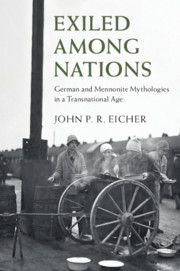This article compares two German-speaking Mennonite colonies in Paraguay and their encounters with Nazism during the 1930s. It focuses on their understandings of the Nazi bid for transnational völkisch unity. Latin America presents a unique context for studying the Nazis’ relationship to German-speakers abroad because it held the allure of being the last prospect for German cultural and economic expansion, but was simultaneously impossible for the German state to invade. The Menno Colony was made up of voluntary migrants from Canada who arrived in Paraguay in the 1920s. The Fernheim Colony was composed of refugees from the Soviet Union who settled alongside the Menno Colony in the 1930s. Both groups shared a history in nineteenth-century Russia as well as a common faith and culture. Nevertheless, they developed radically different opinions about völkisch nationalism. The Menno Colony's communal understanding of Germanness made völkisch propaganda about Hitler's “New Germany” unappealing to their local sensibilities. They rejected all forms of nationalism as worldly attempts to thwart their cultural-religious isolationism. The refugees of Fernheim Colony, by contrast, shared little communal unity since they originated from diverse settlements across the Soviet Union. They viewed Germanness as a potential bridge to an imagined German homeland and believed that the highest goal of völkisch unity was to promote communal unity. Resembling other German-speaking communities in Latin America, the two colonies—which seemed identical to Nazi observers—held vastly different interpretations of völkisch nationalism at the height of the Nazi bid to establish transnational German unity in Latin America.



